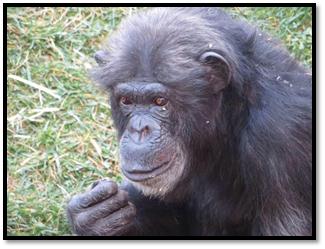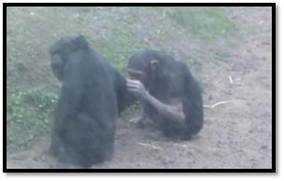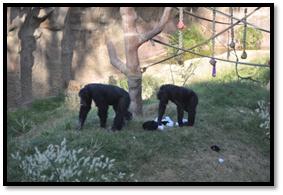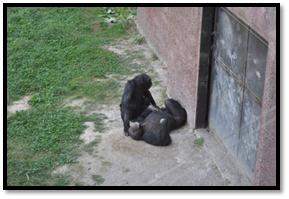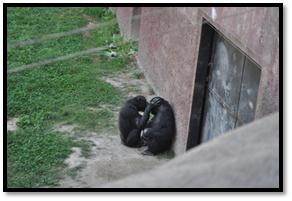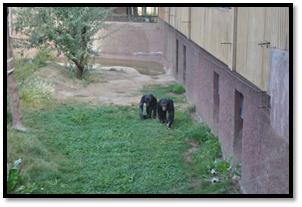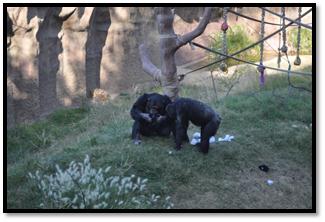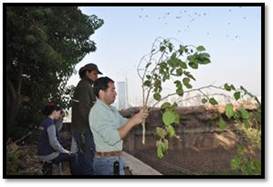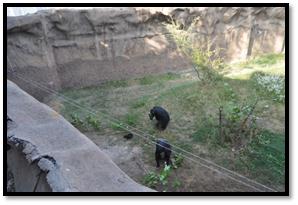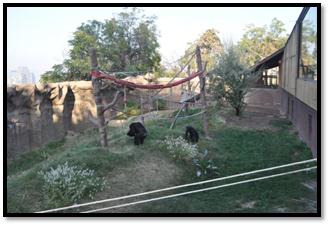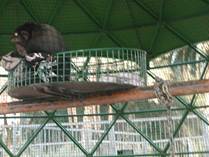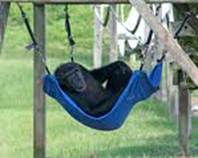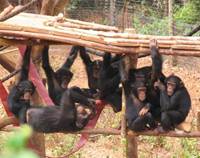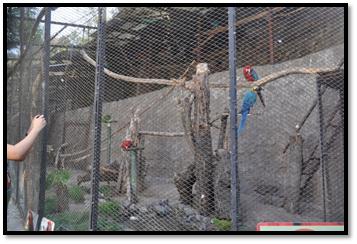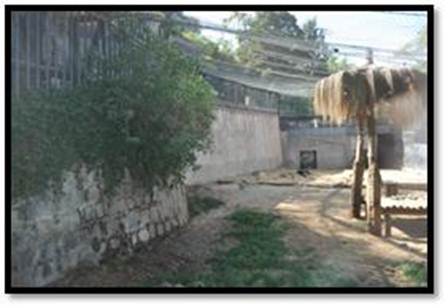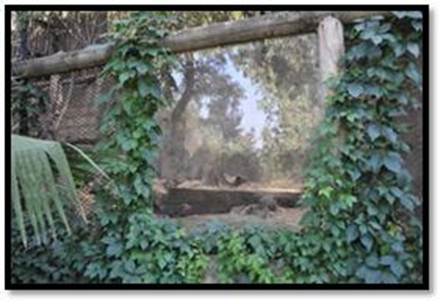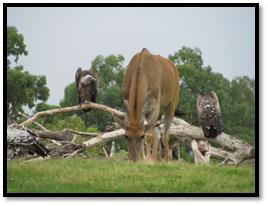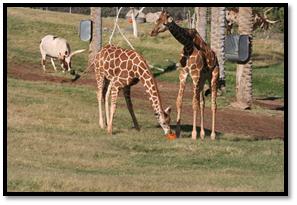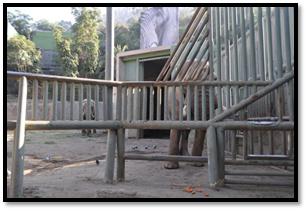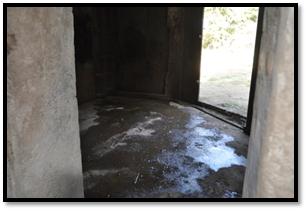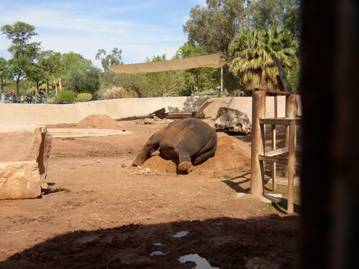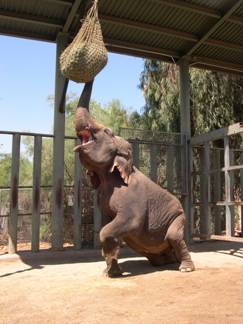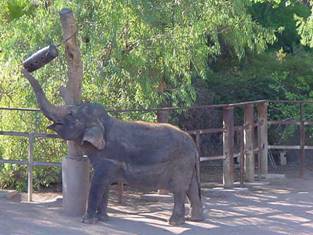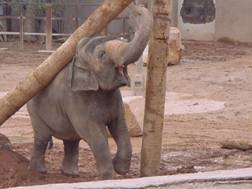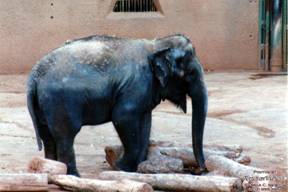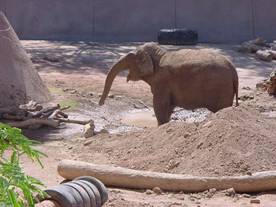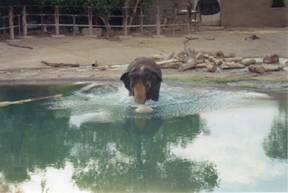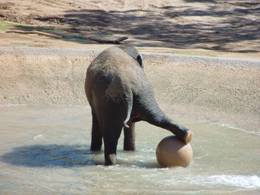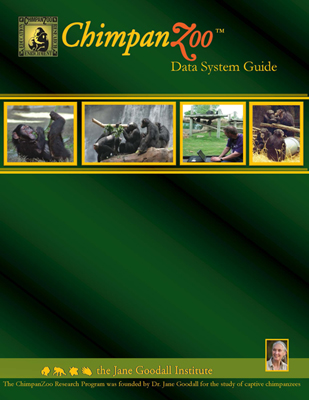
| Hilda Tresz Global Volunteer Work | |||||||||
|
|
National Zoo Update Chile |
|
March 22-28, 2014
Goals The purpose of the visit was to observe and resolve Gombe’s(chimpanzee)
self-mutilation problems and to give recommendations regarding
basic husbandry routine and enrichment for all species. Chimpanzees
Gombe
(male, 13 years old)
Yudy (female, 35 years old) (Pan
troglodytes troglodytes)
(Pan troglodytes schweinfurthii) The
chimpanzees only had one altercation during my visit. This
occurred while I was outside checking their exhibit. It was a
short altercation, and by the time I got inside to see what was
going on, the episode was already over. Staff were not aware of
any episodes for the one month prior to my arrival (possibly due
to exhibit modifications and increased enrichment) and there was
no further aggression during my entire stay. Conclusions
of 5 days of observations: ·
Aggression only occurred once when the animals were locked inside
for an extended period of time. ·
Presence of strangers visiting the chimpanzee exhibit can cause
anxiety due to unknown “danger.” Due to a lack of windows
in the indoor holding area, the chimpanzees have no way of seeing
what’s going on outside in their exhibit. ·
Both animals appear gentle, caring and attentive towards one
another, continuously laying side by side and kissing, hugging and
grooming each other. When they had an argument, Gombe would
self-bite and Yudy would bite the wooden doorstep. Neither one
would bite the other. ·
Gombe’s displays (in my opinion) were normal male aggressive
behaviors, including foot drumming, pant-hooting, cantering gates
and/or lunging runs. These behaviors should not result in any
self-inflictions or real apprehension from Yudy. ·
There are, however, concerns with the great frustration and
redirected aggression that was observed. When Yudy bites the
furniture, it is done with such intensity that I worry she will
break her teeth. Gombe also must have some robust motivation and
trigger to reach the level of frustration that he bites his own
flesh. ·
It seems that Yudy smothers Gombe with her constant physical
communication (e.g., touching, grooming, inviting Gombe to get up
and follow her, etc.) and dominance. She is overwhelmingly
controlling and possibly still considers Gombe as her young,
adopted son. Gombe,
however,
is now an adult male. Please compare size differences from 2011
and 2014.
2011 - Yudy on
right, Gombe on left
2014 - Gombe on left, Yudy on right ·
Gombe respects Yudy and does everything he is asked to; however, he
seemed to be annoyed by it. Usually, when Gombe would lay down,
Yudy would pull him up within a few minutes and either start
grooming him or forcing him to follow her.
If Gombe tried to leave Yudy, she would immediately start trailing
him. Gombe seemed suffocated from her
attention. ·
Both animals have a very good relationship with their keepers, but
Yudy’s bond with her keeper, Miguel, is stronger than that of
Gombe with his keeper, William. ·
Chimpanzees have a fairly busy enrichment program, but it didn’t
seem to be enough. The animals seemed bored on exhibit, lying
around, inactive and just staring at the walls. They would finish
food-related enrichment within a few minutes and then just lie on
the ground, sit in the corners or by the night house door. ·
In one cage, the night house floor had wood shavings, but the
chimpanzees did not have nesting materials such as straw, fresh
leafy branches or paper. Changes
Made Immediately During My Visit ·
Stopping Gombe’s
displays –
When Gombe started to display (hooting and drumming), all staff
immediately left the room, taking human attention and food reward
with them. This method was successful in extinguishing Gombe’s
displays and getting him to calm down. ·
Dividing Yudy’s
attention
– A toy monkey was offered to Yudy to see if it would divert
some of her attention away from Gombe. Many female chimpanzees,
both in captivity and in the wild, carry dolls and/or “stick
dolls” playing with or mothering them. Unfortunately,
Gombe explored the toy first and took it apart. After that, Yudy
had some mild interest in carrying the doll’s remains with her.
·
Intensive training
sessions –
Topics covered extinction of behaviors, finding the right primary
reinforcer, choosing the right trainer for each animal (based more
on trust and relationship than assigned keepers and duties),
filtering down training information, getting into personal space
of animals and having animals initiate actions with keepers. ·
Separating animals for
short periods of time
– In order to give Gombe some free time from Yudy, a slow
training program was developed. During the training sessions,
Gombe and Yudy usually sat next to each other, although he would
often leave her without being requested to do so. When this
occurred, Yudy would break training to remain with Gombe. It was
decided to switch the animals’ training positions and have Yudy
to the left side (furthest night house cage from exhibit door).
The door between the two night house cages is then gradually
closed. Then, the door between the middle and third cages is
closed. Finally, Gombe is closed onto exhibit. During these
shaping steps, if Gombe becomes apprehensive or aggressive, he can
go outside. ·
Browse – Edible
tree branches, such as mulberry and cherry, were given to extend foraging time.
·
Nest building materials
– Items such
as
straw, paper and edible branches were given inside and outside. Suggestions: ·
Possibility of accessing
chimpanzees
24/7 onto exhibit was explored. By purchasing a generatoror
battery backup, possible hot wire failure is resolved and
chimpanzees can be locked inside during morning routine for a
short period of time for cleaning and training. ·
Exhibit can be closed
off at the top
with mesh (similar to tiger exhibit). This would give a chance for
complete use of three dimensions, while preventing any risk of
escape. ·
Higher furniture inside
and outside
can be placed as high as possible by connecting the three poles at
the very top and moving the hammock.
·
3D –
To further improve quality, permanent furniture, especially
sleeping nests needs to be installed as high as possible both in
on- and off-exhibit areas. Please review example pictures below.
The night houses could utilize three dimensions by adding large
tree trunks, ropes, fire hoses, hammocks, wooden shelves, etc. to
increase space and allow opportunities for exercise, exploration
and manipulation. Metal
basket, hammock and platform for sleeping furniture both inside
and outside ·
Doors would
be advantageous and useful during introductions. Suggest building double
sliding doors (one solid and the other one built from bars and
mesh). ·
Windows and skylights
should be installed to increase light, for chimpanzees to avoid
the feeling of claustrophobia and to provide them the opportunity
to see outside into their exhibit. ·
Mesh puzzle feeders
can be installed to extend foraging times. ·
Toys such
asBoomer ball products and recycled household products (cereal
boxes, cardboard boxes, plastic bottles, barrels, plastic cups,
old plush toys, towels, clothing, tires, etc.) are excellent
options to be used. ·
Creating a chimpanzee
sanctuary
by accessing chimpanzees 24/7 onto exhibit, increasing enrichment
and training and modifying the exhibit can help with decreasing
Gombe’s self-biting. However, these modifications alone might
not be enough to change the dynamics between the two animals.
These animals will always have an incredible age difference (22
years) and changing dominance with no chance for breeding (neither
animal has learned the behavior). Bringing in additional
chimpanzees might be able to break boredom, habits and create a
complex unit resembling their wild counterparts. The National Zoo
has funds to cover both major exhibit and night house
modifications, as well as to pay for transportation of additional
chimpanzees. General
Propositions Night
Houses, Off-Exhibit Areas and Correct Substrate Use
Suggestions:
Begin
keeping animals off unyielding surfaces (brick, concrete, etc.),
especially species that have sicknesses (Rhesus macaques with fur
problems). The use of appropriate substrate (inside- paper
products, hay or straw, etc.; outside- nonflammable materials such
as grass, sand, soil, mulch, fresh browse, etc.) will make a
significant difference not only in the animals’ mental and
physical health, but also in improvement of the exhibit
aesthetics. Using substrate will also reduce cleaning time and
water consumption. Soaking, scrubbing and hosing dry waste takes
much longer than spot cleaning due to substrate absorbing urine
and covering feces. Reducing hosing and partially covering
surfaces with substrate will overcome any of these obstacles and
provide animals with a soft surface. Carnivore
keepers were immediately adding substrate to exhibits and the
animals appeared to enjoy them greatly.
Lions lying in straw
Cougar
playing with straw Browse The zoo has a large amount of edible vegetation available on
grounds that can provide fresh, leafy branches (browse). Suggestions: Browse should be provided at least every 2-3 days, but if
possible, every day for animals that need it. The zoo can plant edible
trees, bushes and even crops inside and outside of exhibits, along
visitor pathways and resting areas that will provide future
browsing materials for the collection’s growing demands. Whether
cut by staff or available by natural damage, fallen vegetation can
be used rather than wasted. Immediate follow up: The Phoenix Zoo browse schedule by species
and approved plant lists,and Cornell University’s toxic browse
list, tree pruning procedures and soil cultivation information was
provided. Mixed
Species Exhibits Mixed
species exhibits can be created in order to free up space and
develop a more aesthetic, complex exhibit. This type of exhibit
also resolves certain problems associated with housing otherwise
social species alone until they are paired with a conspecific. Please
review the photos of Phoenix Zoo mixed exhibits.
Extending
Foraging Time Suggestions:
All
animals need to be fed in a way that their foraging time is
extended and proper species-specific behaviors are encouraged. If
no one can be appointed for this position, staff can be scheduled
to cut browse and chop diet on a rotation basis. General
Suggestions for Elephant Care The
National Zoo currently has 1.1 African elephants on natural soil
and concrete night houses. I was happy to see that the exhibit had
a small sand pile added, but it is not large enough for resting.
The surface
of the exhibit was also smooth and flat and will need to be broken
up. .
I
have found that the animal trainers are very caring and attentive
to their animals. Additionally, they have an excellent training
program. My
only two suggestions would be to discontinue making animals lay
down to sternal position and instead teach trunk wash for TB
testing. For
further information, please contact Heather Wright, Phoenix Zoo
Elephant Manager at hwright@thephxzoo.com. Education The
following PowerPoint presentations were given to all staff: ·
Lack of Substrate Use in
Zoos addresses
the easy fix of adding substrate to empty cages and shows the
benefit to the animals’ lives when provided with substrate
(i.e., when they do not have to sit inside empty, concrete cages).
This is probably the most important animal welfare presentation to
give out of the five. ·
Contra Freeloading at the
Phoenix Zoo
talks about extending foraging times by making animals work for
their food in ways similar to their wild counterparts, instead of
eating diet in short periods of time from provided dishes. ·
The Beneficial Browse presentationprovides
guidelines on how to develop a low cost, zoo-wide browse
program in the middle of the Sonoran Desert. It also addresses the
major changes that fresh, leafy greens can make in the animals’
lives. ·
Let Them Be Elephants
addresses the changes the Phoenix Zoo made in our elephants’
lives, how we helped their behaviors by teaching them how to
correctly forage and behave like normal females. It also talks
about basic husbandry, enrichment ideas and health care. ·
Chimpanzee: To understand,
to mentor, to save discusses the chimpanzees’ physiological and behavioral
similarities to humans.. Yet, despite the incredible resemblance
and relatedness between chimpanzees and humans, I often find that
chimpanzees are maintained in inadequate, and in some cases,
deplorable conditions all around the world. Based upon these
observations, it would seem that traditional conservation messages
have not been widely effective in protecting these important
animals when under human care. This presentation attempts to
convey the intelligence, describe the sensitive minds and
illustrate the social and physical needs of the chimpanzee. By
revisiting this close relative of humans from a different angle, I
hope that all people will begin to better appreciate these animals
and their fundamental needs. Perhaps once humans are compared to
chimpanzees, people will think more highly about these animals,
look at them with respect and show more compassion, love and care
towards them. And maybe, just maybe, we will realize the
incredible injustice that is being done daily to a species that
walks in the “shadow of man.” Presentations
are available at htresz@thephxzoo.com. I
would like to thank the National Zoo’s staff for their
incredible hospitality, making me feel so welcomed and continuing
such a wonderful, working relationship between the Jane Goodall
Institute, the Phoenix Zoo and the National Zoo. |
| Program
Information |
| Research Research Papers Password
Required
|
|
Education Instruction Manuals ChimpanZoo Data System Guide
|
Contact Information
ChimpanZoo
the Jane Goodall Institute
1595 Spring Hill Rd, Suite 550
Vienna, VA. 22182
Phone: (703) 682-9200
| Intute: Nature is a gateway to quality evaluated internet resources in the natural world, coordinated by the Natural History Museum, London. Intute: Nature is part of Intute: Health and Life Sciences, an integrated collection of internet gateways covering health and the life sciences. ChimpanZoo is proud to be a part of this science learning experience. |  |
 |

